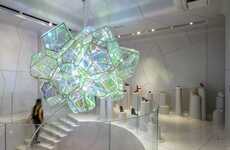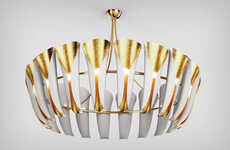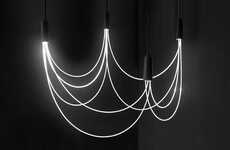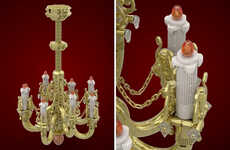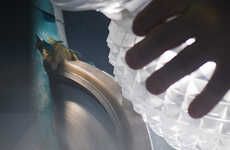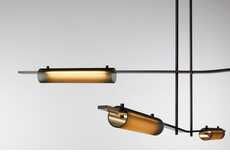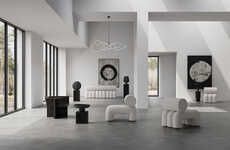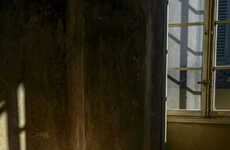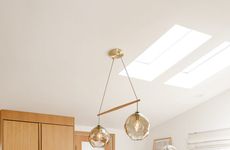
Zorya Uses a Controlled Mineral Crystallization Technique
Kalin Ned — October 18, 2018 — Art & Design
This extravagant crystal chandelier by Zorya is on display at the Museum of Decorative Arts in Dresden, Germany. The design is debuting at an exhibit, dubbed 'From Dust to Glitter or How a Crystal Chandelier Grows,' and the lush decorative lighting fixture took Zorya six years to complete.
The 18-armed creation is developed through a controlled mineral crystallization process. A stainless steel frame is dipped in five thousand liters of a potassium aluminum sulfate solution. During this time, alum crystals gradually begin to appear onto the skeleton of the piece. The process takes several weeks and the growth of the crystals is largely unpredictable. Thus, the shape and aesthetic of the extravagant crystal chandelier was determined through the intricate technique that gave birth to it.
The 18-armed creation is developed through a controlled mineral crystallization process. A stainless steel frame is dipped in five thousand liters of a potassium aluminum sulfate solution. During this time, alum crystals gradually begin to appear onto the skeleton of the piece. The process takes several weeks and the growth of the crystals is largely unpredictable. Thus, the shape and aesthetic of the extravagant crystal chandelier was determined through the intricate technique that gave birth to it.
Trend Themes
1. Controlled Mineral Crystallization - Disruptive innovation opportunity: Create new applications for controlled mineral crystallization techniques in architecture and interior design.
2. Lush Decorative Lighting - Disruptive innovation opportunity: Develop energy-efficient and customizable alternatives to traditional crystal chandeliers for residential and commercial spaces.
3. Unpredictable Aesthetic Growth - Disruptive innovation opportunity: Design a technology or process that allows for controlled yet unpredictable aesthetic growth in artistic and decorative objects.
Industry Implications
1. Architecture and Interior Design - Disruptive innovation opportunity: Integrate controlled mineral crystallization techniques into architectural structures and interior design elements for unique visual effects.
2. Lighting Manufacturing - Disruptive innovation opportunity: Explore new materials and techniques to produce lush decorative lighting fixtures that offer energy efficiency and design customization.
3. Art and Decorative Object Design - Disruptive innovation opportunity: Combine technology and artistic expression to create objects with unpredictable yet controlled aesthetic growth, expanding the possibilities in the art and design industry.
2.7
Score
Popularity
Activity
Freshness


